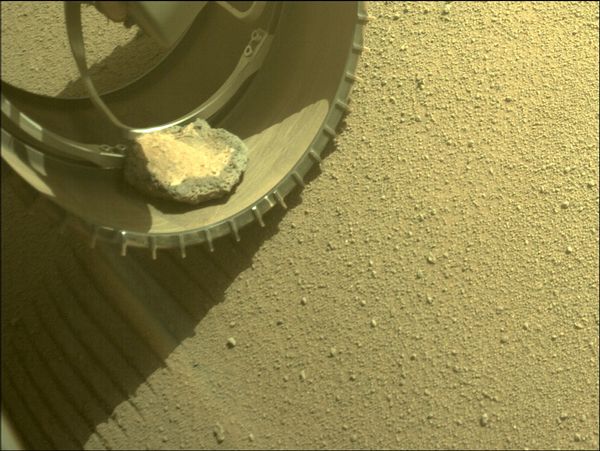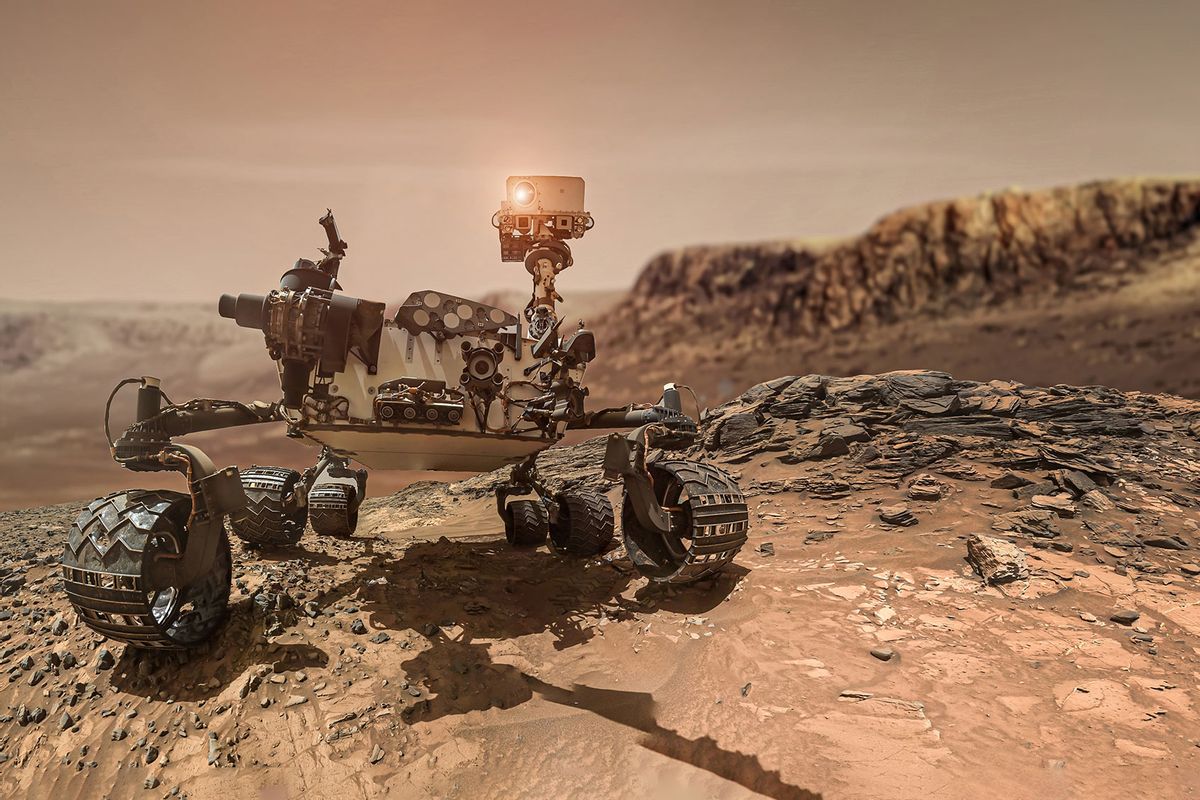Life for Perseverance, the plucky rover that is currently roaming the Red Planet some 132 million miles away from Earth, is quite lonely. From the desolate, dusty landscape of Jezero Crater to the gusty Martian winds, life on Mars is not for the faint of heart — or at least, for those who are extroverts. Hence, despite being a robot on a scientific research mission, researchers on NASA's Perseverance mission team were surprised recently to discover that Perseverance had accidentally adopted a pet rock.
It's unclear whether Perseverance chose the rock or the rock chose Perseverance, but scientists say the rock has found itself a cozy home on the rover's front left wheel, at which point it began to cling to it. According to a news release from NASA about the rock, the rock has been there since early February and has traveled more than 5.3 miles around Mars; Perseverance itself has traveled a total of 7.3 miles since it touched down on Mars in February 2021. Fortunately, the rock hasn't caused any damage to Perseverance, though it has certainly lived up to its owner as it perseveres in clinging to the rover after so many miles.
 Rock stuck in Perseverance rover's shoe (NASA/JPL-Caltech)
Rock stuck in Perseverance rover's shoe (NASA/JPL-Caltech)
This isn't the first time a rover has adopted a rock — or rather, that a rock has chosen a rover. Nearly 18 years ago, a potato-sized rock hitched on to the right wheel of the Spirit rover, which operated on the surface of Mars from 2004 to 2010. Mission operators eventually had to dislodge the intruder remotely. The Curiosity rover, which landed on Mars in 2012, saw rocks periodically lodged in its front right wheel. However, scientists say that usually these types of rover-rock relationships typically last only a few weeks— not months.
Want more health and science stories in your inbox? Subscribe to Salon's weekly newsletter The Vulgar Scientist.
Since landing on Mars in February 2021, Perseverance has racked up an impressive list of firsts. For example, the rover's combined mission marked the first time a helicopter was flown on another planet. Perseverance also managed to extract oxygen from the Red Planet's carbon dioxide atmosphere, a method that could someday be used to provide astronauts with oxygen on Mars. And perhaps most importantly, Perseverance successfully collected and stored soil and rock samples that will ultimately become the first Martian rocks to return to Earth for scientific study. And it's now also had a pet rock for the longest period of time of any rover — nearly four months and counting. Is there anything Perseverance can't do?
In other Perseverance news, a paper published in Science Advances detailed Perseverance's observations of hundreds of dust devils and its famous video of wind gusts lifting a massive Martian dust cloud. Scientists say that Perseverance's observations of these weather phenomena, which were made during the first 216 Martian days of its adventure, could help predict dust storms on Mars in the future.
Related: Mars' weird geology vexes scientists
"Jezero Crater may be in one of the most active sources of dust on the planet," said Manuel de la Torre Juarez, deputy principal investigator at NASA's Jet Propulsion Lab, in a press release. "Everything new we learn about dust will be helpful for future missions."
The authors of the study discovered that at least four whirlwinds pass Perseverance on a typical Martian day— making the resilience of Perseverance's rock friend even more notable and impressive.
Is an end to the rock's journey in sight? Scientists suspect that the rock may fall off during a future ascent of the crater rim due to gravity. And if it does, it will land in an area with rocks very different from itself. As Eleni Ravanis, a student collaborator at University of Hawaiʻi at Mānoa explained in the news release about the rock, a future Mars geologist would be perplexed by the rock's placement.
"So: if you're a Martian geologist from the future reading this, maybe a Martian graduate student tasked with mapping the historical site of Jezero crater: take heed," Ravanis wrote. "If you've found a rock that looks out of place, you might just be looking at the former pet rock of Perseverance."
Read more about Mars:



Shares